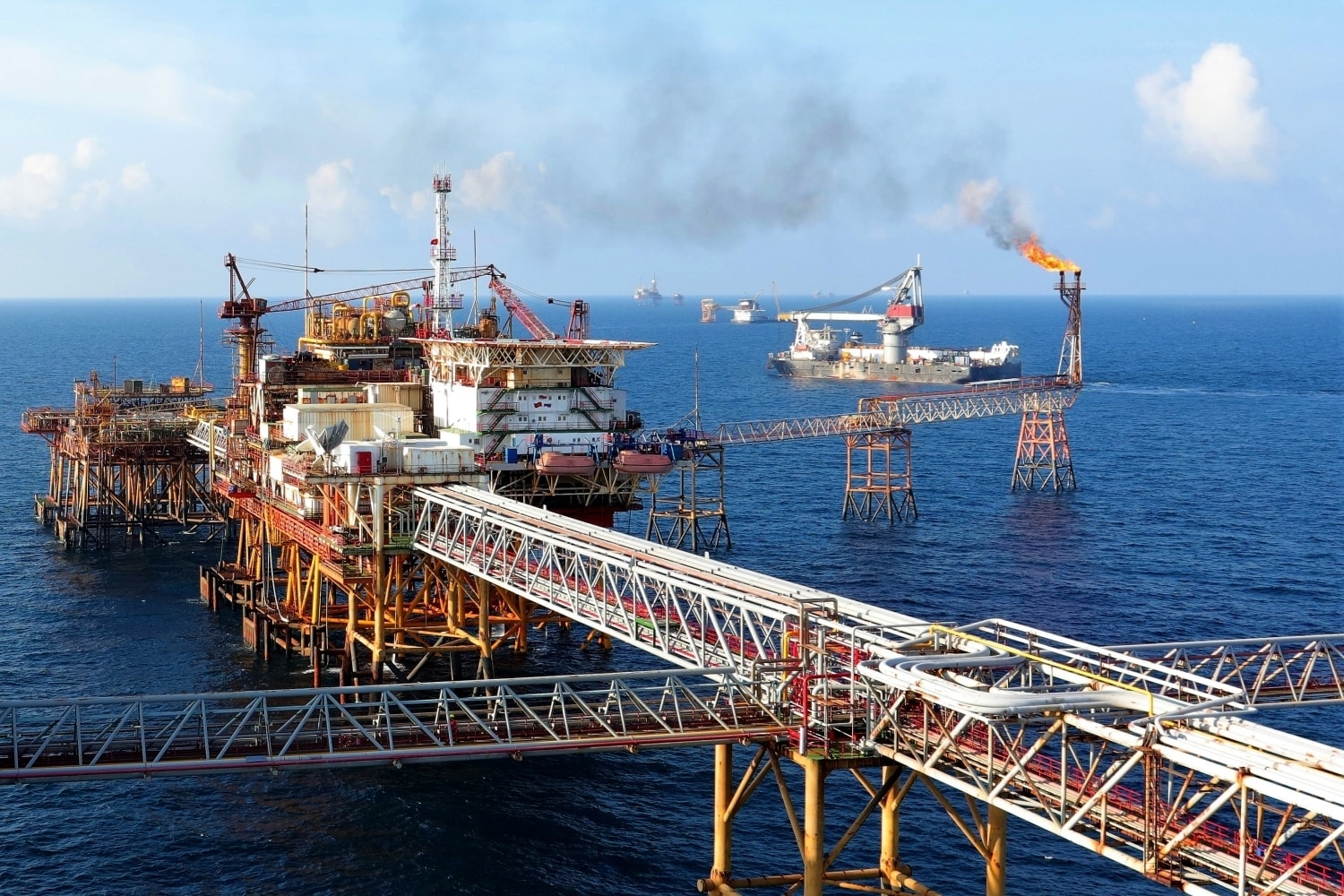Will Middle East tensions sustain the uptrend of oil & gas stocks?
Oil & Gas stocks have recently surged, showing signs of escaping their prolonged bottom base. This rally is partly attributed to the escalating geopolitical tensions between Israel and Iran, which have sent shockwaves through global energy markets and lifted investor sentiment in the oil sector.

In the final trading session last week (June 13), Oil & Gas stocks unexpectedly broke out and hit their upper trading limits. Shares of key players such as GAS, PVS, PVD, BSR, PLX, and PVT all climbed sharply, marking a rare upward wave for the sector, which has remained subdued over the past six months.
A significant factor behind this resurgence lies in the sharp rebound in global oil prices. Brent crude prices jumped by 9% to nearly $75 per barrel—its highest in two months—following the heightened military conflict between Israel and Iran. This marked the strongest weekly performance for oil prices in more than three years, since February 2022.
Despite the positive price trend, a recent report by MBS highlights the divergence among various sub-sectors within the Oil & Gas industry. In the upstream segment, domestic projects are expected to generate substantial workloads for EPCI contractors, as crude oil prices are likely to stay above the threshold needed to support exploration and production activities. However, drilling companies may face challenges achieving strong growth if no new rigs are procured in 2025.
In the oil transportation segment, time charter rates across most categories are projected to remain stable or potentially decline. With tanker prices remaining high, oil transport firms may seek growth by expanding their fleets through more flexible strategic approaches. Meanwhile, domestic gas distributors are shifting their focus to LNG conversion, especially as local gas reserves continue to decline. This transition is expected to remain a central theme through 2025 and into the medium term.
Refining businesses could encounter headwinds. While refinery capacity may remain stable, refining margins—also known as crack spreads—are under pressure due to weak global demand. For fuel distributors, however, regulatory changes and stabilized oil prices could support more consistent stock performance in the coming months.
According to a recent analysis by SSI Research, the outlook for Oil & Gas industry profits in 2025 appears optimistic. The rebound in exploration and production activities is expected to significantly improve earnings across the sector. For instance, BSR is projected to see a 73% year-on-year profit increase, reaching VND 3.1 trillion, driven by a 15% recovery in consumption volume post-maintenance and more stable refining margins following the closure of some global refining capacity. PLX is expected to post single-digit profit growth, with a natural increase in consumption volume of around 4%. GAS’s profits are forecast to remain flat, as the rise in LNG supply offsets declining output from traditional fields.
Upstream companies such as PVD and PVS are also projected to maintain growth momentum, primarily driven by new E&P activities. These firms will benefit significantly from the Block B project. PVS is expected to post a 20% increase in 2025 earnings, supported by revenue from EPC contracts for Block B’s upstream segment. The total contract value is estimated at around VND 1 trillion. Furthermore, the broader value chain of the Oil & Gas industry, as it gains momentum in 2025, is expected to further drive stock price growth in this sector.
LNG infrastructure expansion is also a key part of the sector’s long-term strategy. The feasibility study for expanding the Thi Vai LNG terminal has been approved, with the project expected to triple the terminal's capacity by 2026. Additionally, the Son My LNG project in Binh Thuan province has received the green light. The initial phase will have a capacity of 3.6 million tons and is scheduled for completion by Q4 2027. A second phase, with a higher capacity of 6 million tons, could be operational before 2030.
At the same time, the Dung Quat refinery expansion is moving forward. BSR has completed land compensation and plans to finalize the FEED (Front-End Engineering Design) and select an EPC contractor in 2025. Once completed, the project will boost BSR’s capacity by 15.5%, from 148,000 barrels per day to 171,000 barrels per day, in compliance with Euro B standards.
One of the most anticipated developments is the massive Block B – O Mon project. PQOC, which holds the upstream assets, has already awarded multiple EPC contracts for upstream and midstream components—including wellhead platforms, living quarters, CPPs, pipelines, and coating works—to PVS and PVB, in collaboration with other partners. Drilling activities are expected to commence in the first quarter of 2026, with drilling tenders and contracts finalized during 2025. The first gas flow is expected by 2027, and full operations, including power supply to the national grid, will begin only after that year.
While geopolitical tensions and rising oil prices have indeed provided a short-term boost to Oil & Gas stocks, investors should remain cautious. The long-term sustainability of these gains will ultimately depend on the sector's core business fundamentals and execution of its major development projects.








